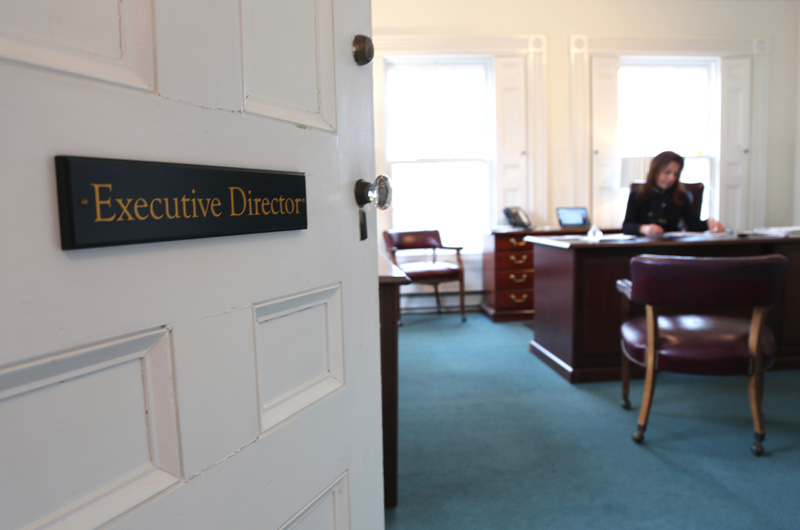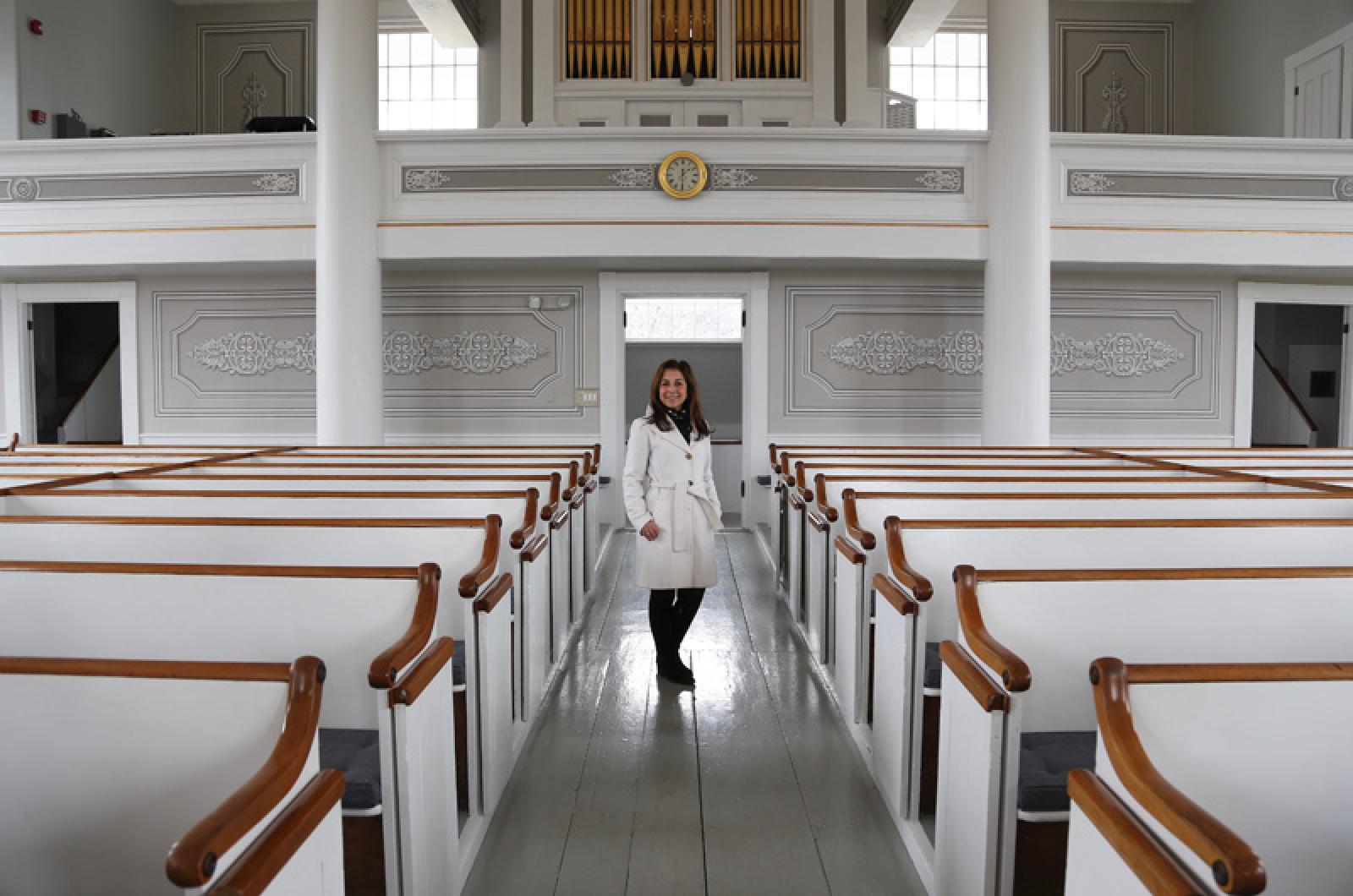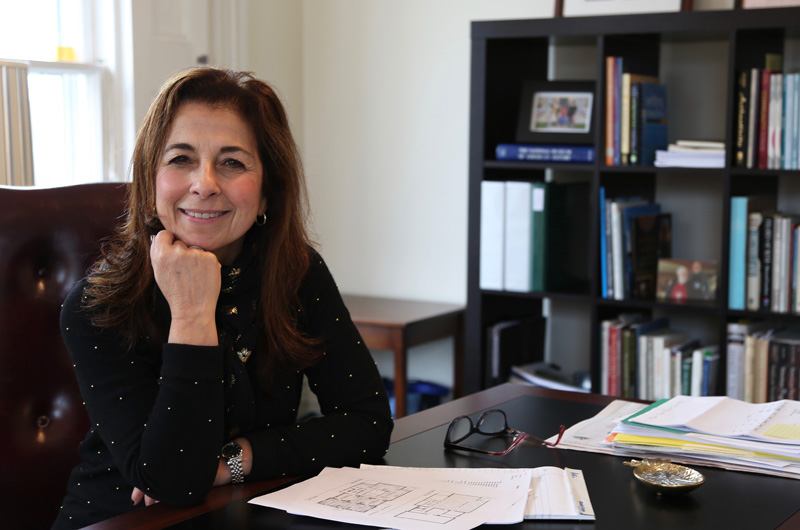When Funi Burdick arrived on the Island early this year, she was struck by what she calls an unparalleled sense of community.
“Each day, I think a little bit more about that,” she said in a conversation with the Gazette this week, reflecting on her first two weeks as director of the Martha’s Vineyard Preservation Trust, which owns and manages historic properties around the Island. In her third floor office in the historic Dr. Daniel Fisher House overlooking Main Street in Edgartown, she pondered how the Island has been able to maintain its unique character and sense of community over the years. She noted its diverse landscape and architectural history — and a history of preservation itself that goes back centuries.

She pointed to the absence of box stores and other facets of modern life that tend to diminish a sense of place and community. “By not having big business invade the Island,” she said, “we create a sense of interdependency, and that interdependency makes us really care about one another and really be neighbors, because we are supporting each other and supporting each other’s work, and that’s unique.”
Cape Cod, where Mrs. Burdick and her husband have often vacationed, has always felt like home, she said, although the Vineyard is something of a new adventure. After two short weeks on the Island, she said she already felt welcomed by the community, and looked forward to exploring the Island and meeting more of its year-round residents. She also looked forward to seeing how the Island might solve some of its ongoing housing problems. (She was currently in the market for year-round housing.)
“It seems that everyone came here once and never left,” she said, again noting the strength of community she has encountered. “Sometimes you get 50 per cent. But here it seems like 100 per cent are here for that reason. It’s very exciting.”
Although she applied late in the process, Mrs. Burdick’s experience in public history settings in New England, among other things, quickly put her at the top of the running for preservation trust director. In New Hampshire, she directed the Canterbury Shaker Village, and held top positions at the Strawbery Banke Museum, and the American Independence Museum, in each case working to involve the public in learning about history and applying lessons from the past to modern life.
Mrs. Burdick and her husband, David, a professor of coastal ecology and restoration at the University of New Hampshire, had long imagined moving to the coast, and when the job listing appeared online last year, Mrs. Burdick saw it as an ideal opportunity.
“The thing that captured my attention was that the preservation trust was truly interested in acquiring endangered landmarks with the intention of not only restoring them but making them intrinsic to the Island’s contemporary life,” she said. The trust’s 21 historic buildings and four historic landscapes continue to function in Island commerce, community life, tourism and education. “I was intrigued that it wasn’t a museum setting I would be working with, but it would be a real living community,” Mrs. Burdick said.
Most recently, the trust acquired the former Carnegie Library on North Water street in Edgartown, with plans to convert the early 20th-century building and a newer addition into an Island heritage center. Leafing through the floor plans on a side table in her office, Mrs. Burdick, a former architect, explained how the center will highlight not only the trust’s own properties, but other landmarks and organizations as well. “We hope to offer that as a contribution to the whole Island,” she said. The plans include a non-lending library focusing on Island history, along with a cafe, a gift shop and two floors of exhibit space.
As with the other trust properties, the heritage center will embody a harmony of preservation and change that in some ways defines the Island culture. But perhaps more importantly, it will highlight the value of not taking the Island’s well-preserved history for granted. “We are living in a very fragile society, where everyone thinks that how it is today is how it will always be,” Mrs. Burdick said. “Human nature makes us think that way, and yet we all know that everything changes.” She added: “At the Island heritage center, we can really talk about all the people who for centuries have preserved the Island so that we today are living in a very vibrant community.”
In line with the trust’s mission to connect the community with Island landmarks, the Carnegie building has already served one new purpose — as a temporary post office, when water damage caused the actual post office near the Triangle to suddenly close in the spring. (A new library had opened in another location in March.)
Looking ahead, Mrs. Burdick said she plans to spend the next year or two learning the ropes of her new organization and new community, and working with Island residents and the preservation trust board to identify possible acquisitions — and ways to better utilize the trust’s current landmarks to build a stronger community.
In her spare time, Mrs. Burdick often finds herself behind the lens of a camera, framing people and landscapes for her large-format photography, developing her skills as a painter, or enjoying walks on the beach and days in the garden.
Before her career in public history museums, she spent years working as an architect, which she saw as an ideal foundation for her work in museums and historic preservation. “Architecture school really trains you to think about the big picture: large-scale and long-term,” she said. “It’s just a great training, I think, for anybody doing anything.” (She has a degree in architecture and fine arts from the Rhode Island School of Design, and her son, Benjamin, recently graduated from the Harvard Graduate School of Design.) But she said the biggest benefit has come from learning to follow an idea through to completion.
“What I love to do is to work with people to generate ideas — lots and lots of ideas — and then hone the ideas down till you find that one jewel, and then do it,” she said. “But I’m all about doing it in the end. I don’t want to just have an idea.”








Comments (3)
Comments
Comment policy »